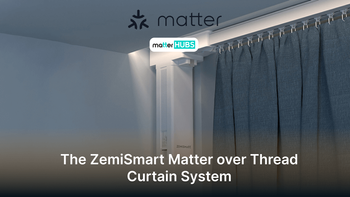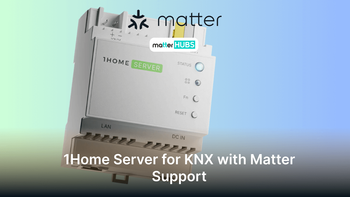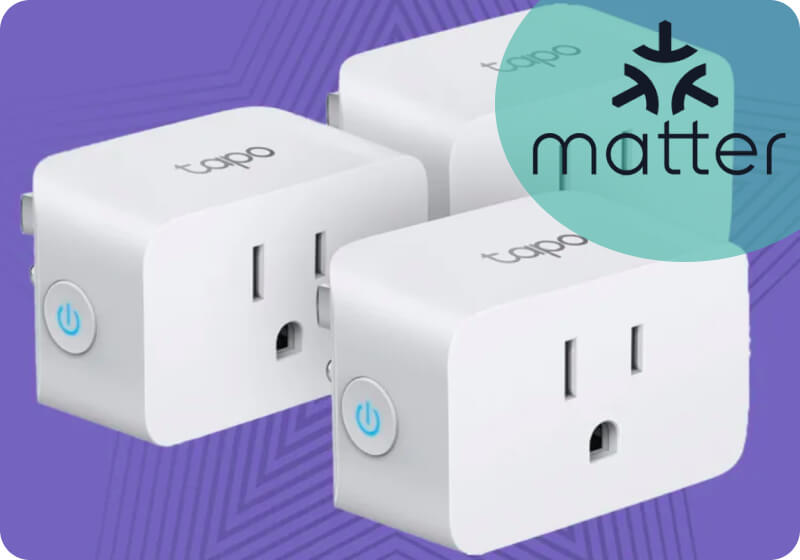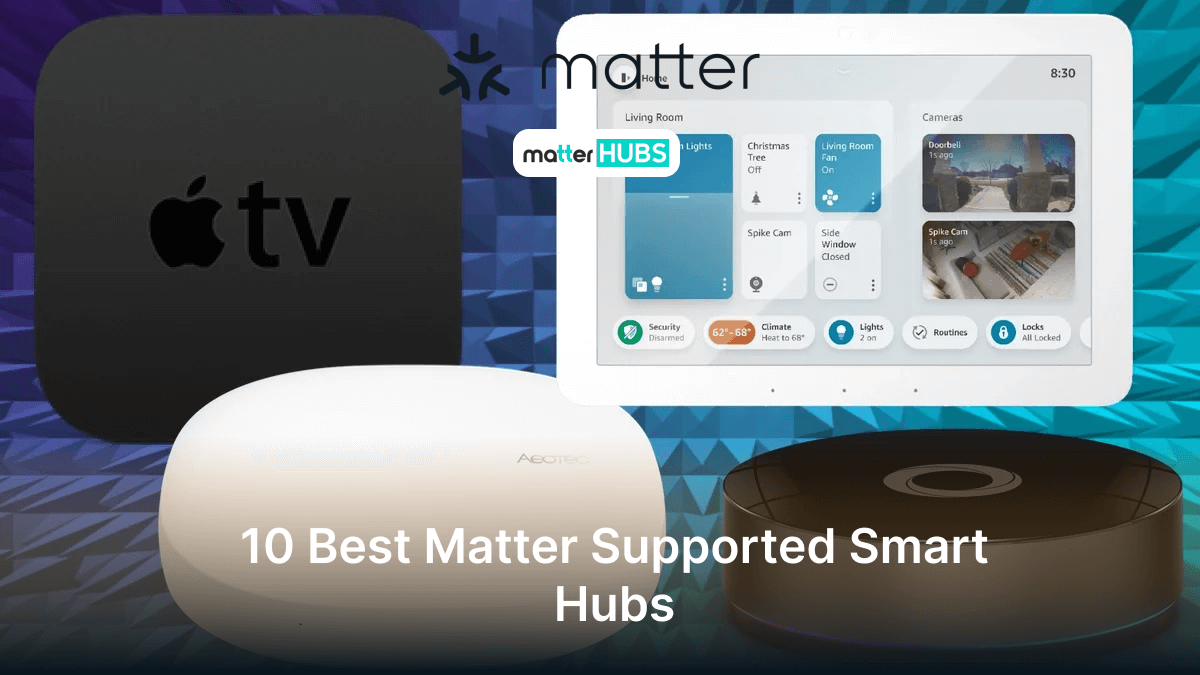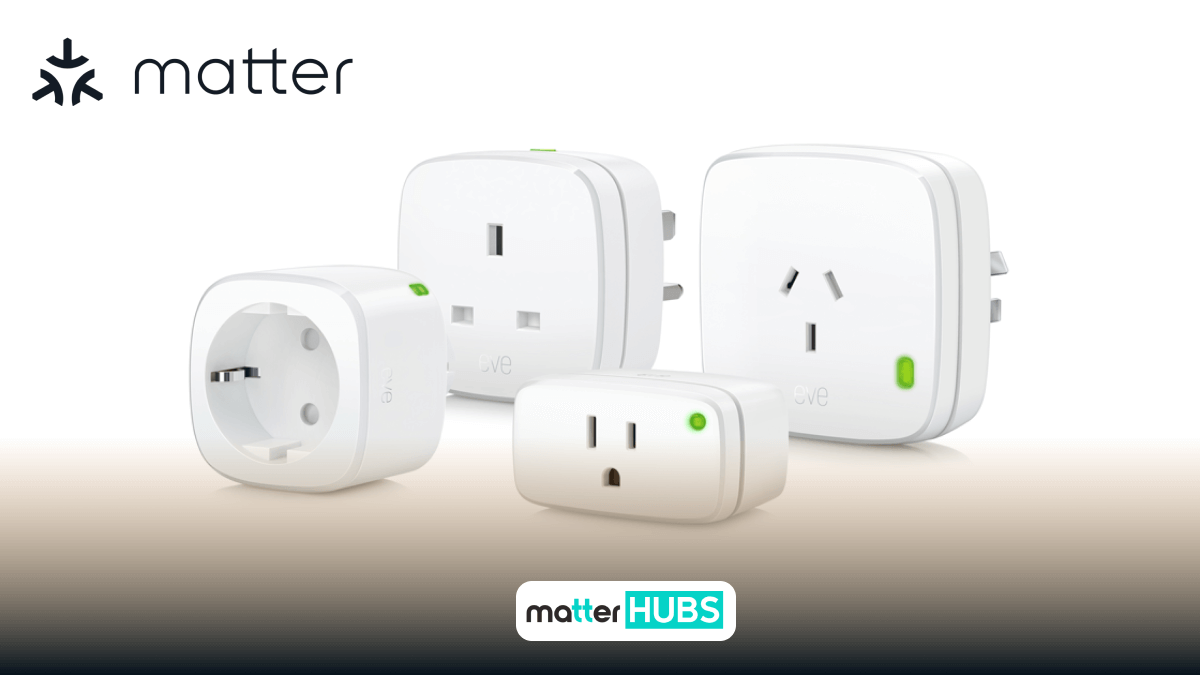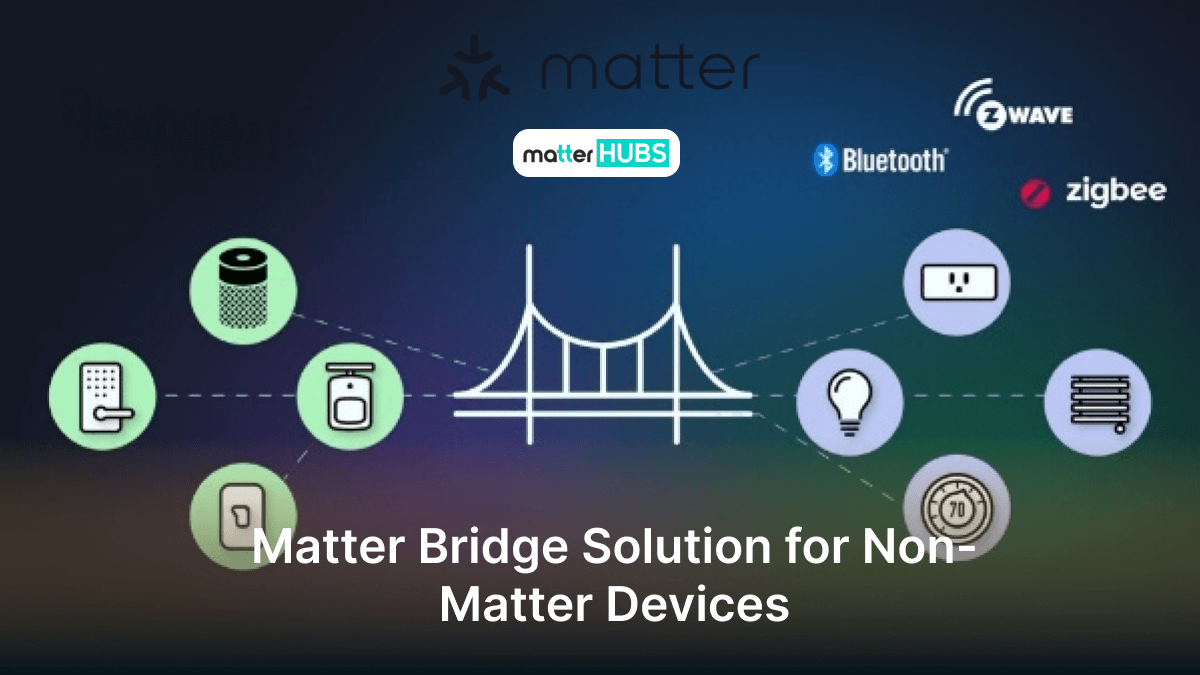
Matter Bridge Solution for Non-Matter Devices
a year ago • 6 min read

If you are wondering what a Matter Bridge is, let us explain. The Matter Bridge is essentially a small hub that bridges Matter non-compatible devices to the Matter Fabric.
To put it in basic words, the Matter bridges allow you to connect your incompatible devices to Matter and achieve amazing and seamless home automation. Giving you smart home control over one platform! This article will give you 4 amazing Matter bridges that allow you to do just that!
Let’s go!
Phillips Hue Bridge
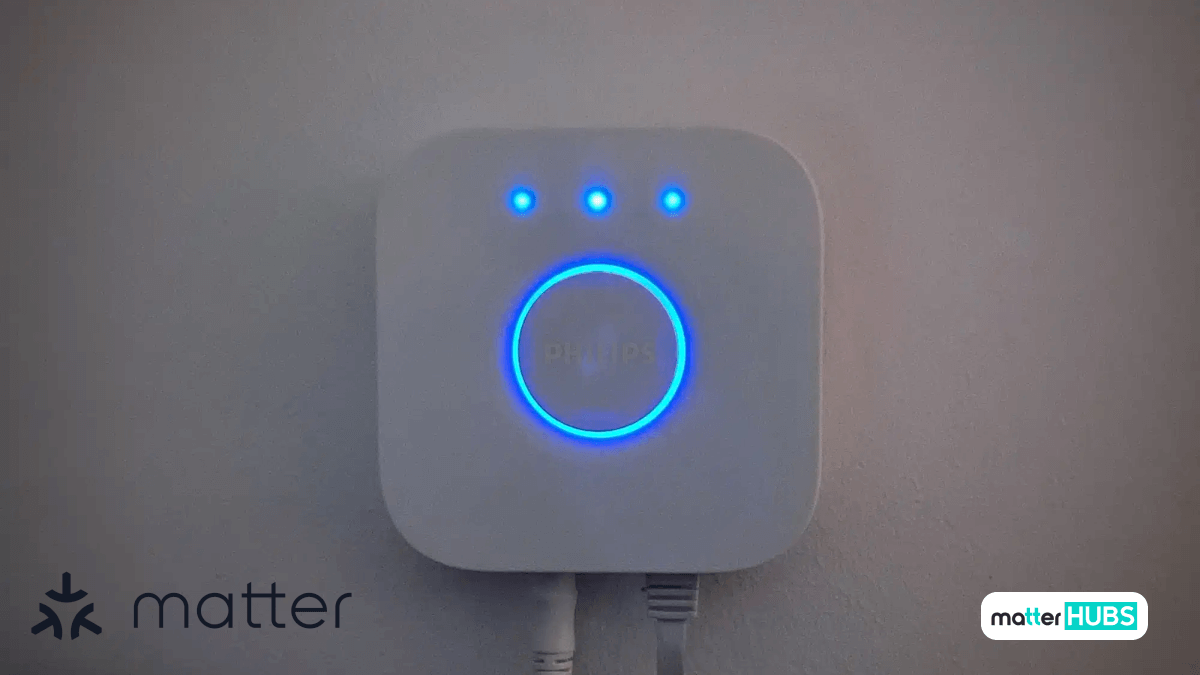
The Philips Hue Bridge is a well-known smart lighting hub that acts as the central brain for the Philips Hue ecosystem. It connects all your Hue lights and accessories, allowing for easy control through the Philips Hue app and integration with various smart home platforms. With recent updates, the Hue Bridge can also connect to Matter-enabled devices, expanding its capabilities beyond just lighting. Phillip Hue lights are also some of the best Matter smart light switches in 2024. You can even create a Tapo HomeKit integration with this solution. Matter bridges are not necessary according to iOS 18 Matter updates.
Key Features
-
Matter Integration: Now supports Matter, enabling it to work with a broader range of smart home devices.
-
Zigbee Protocol: Operates on Zigbee, making it reliable for controlling Philips Hue lights.
-
Cross-Platform Compatibility: Works seamlessly with Apple HomeKit, Google Assistant, and Amazon Alexa for voice control and automation.
Advantages
- Ideal for Lighting Control: Perfect for those who want a dedicated system for managing Philips Hue lights.
- Reliable and Stable: Known for its consistent performance and user-friendly interface.
- Simple to Set Up: Easy installation process, especially within the Philips Hue ecosystem.
Disadvantages
- Limited to Lighting: Primarily focuses on smart lighting control, with limited use for other types of smart devices.
- Basic Matter Features: Matter integration is basic and may not offer the full range of functionality some users expect.
Sonoff ZBbridge-U
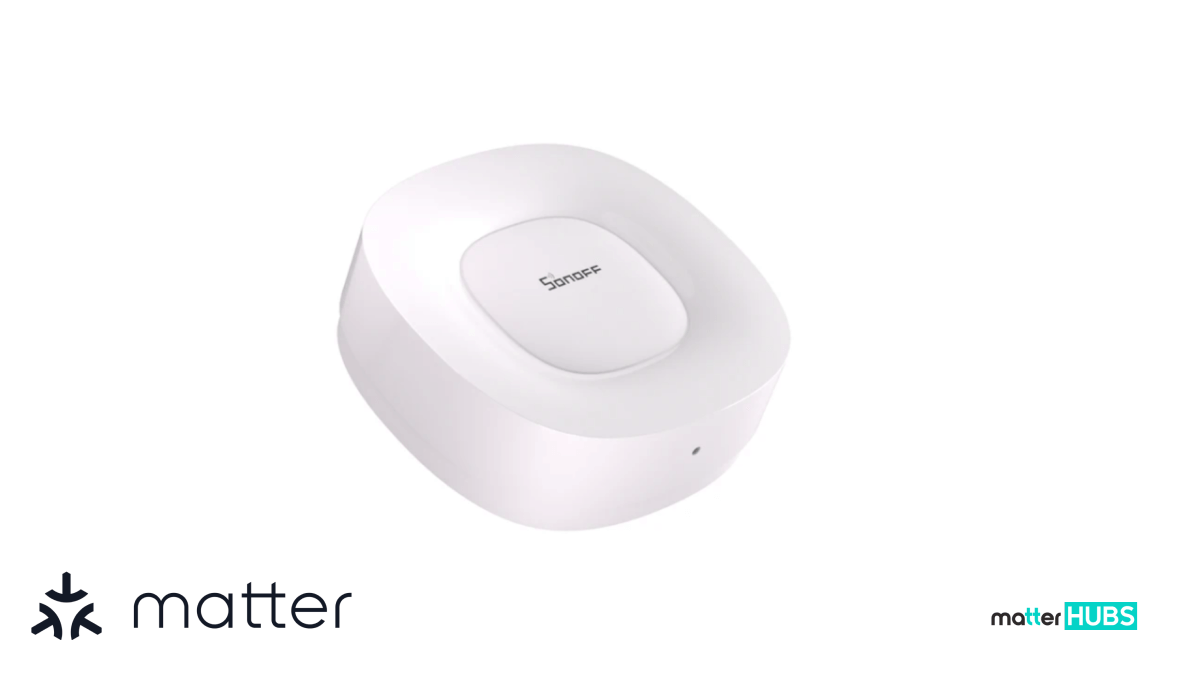
The Sonoff ZBBridge-U is an affordable Zigbee bridge designed for those looking to bring Zigbee devices into their smart home setup. If you are looking for one of the best Matter hubs this is an amazing option! It's especially popular among DIY enthusiasts who like to build customized automation systems. Although it's primarily a Zigbee bridge, it is expected to support Matter in the future, making it a versatile option for smart home enthusiasts.
Key Features
-
Zigbee and Matter Support: Built for Zigbee devices with future updates planned to include Matter support.
-
Home Assistant Friendly: Compatible with Home Assistant, allowing for comprehensive automation possibilities.
-
Cost-Effective: Offers a budget-friendly option for those entering the smart home space.
Pros and Cons
Advantages
- Great for DIY Projects: Ideal for users who enjoy building their own smart home systems with platforms like Home Assistant.
- Affordable and Accessible: A low-cost option that doesn't compromise on functionality.
- Community Support: Strong developer community on GitHub, providing firmware updates and custom integrations.
Disadvantages
- Matter Support Not Yet Available: Currently lacks Matter compatibility, which is expected in future updates
- Zigbee Only: Does not support other protocols like Z-Wave, limiting its use to Zigbee devices.
Aqara Hub M2
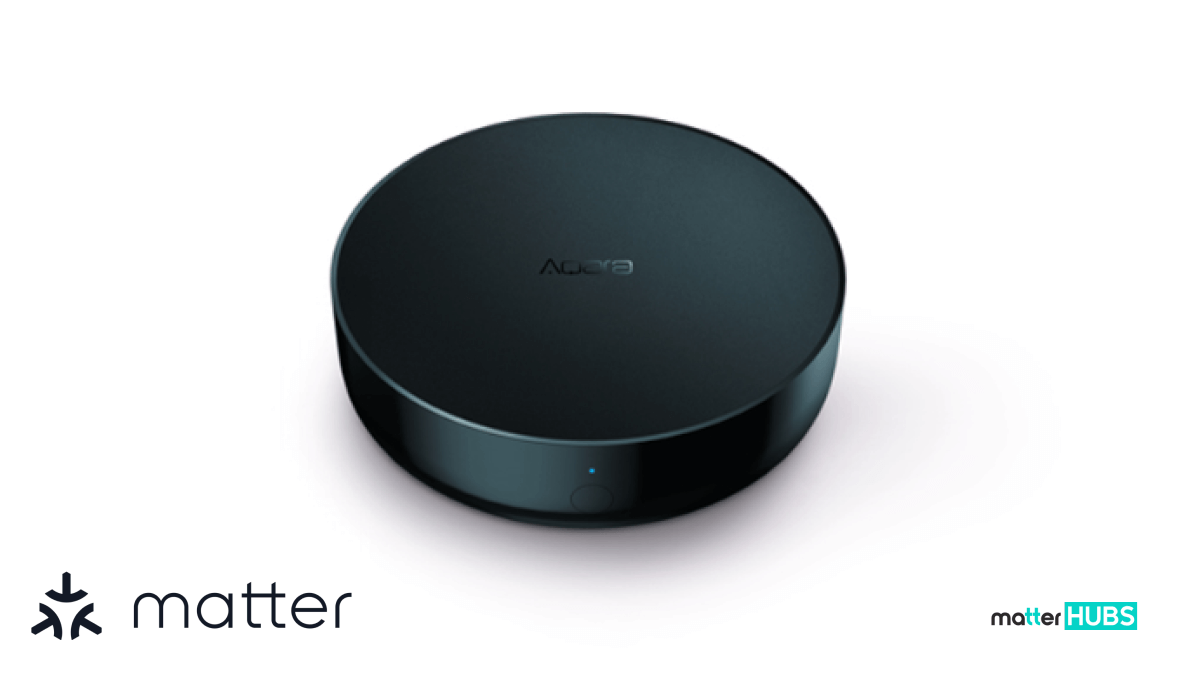
The Aqara M2 is a versatile smart home hub that supports multiple protocols, including Zigbee, IR, Bluetooth, and Wi-Fi. It also can integrate with Matter-enabled devices through firmware updates. This hub is perfect for users who want to manage a variety of smart home devices under one roof, offering extensive compatibility and control options.
Key Features
-
Supports Multiple Protocols: Compatible with Zigbee, IR, Bluetooth, and Wi-Fi, plus Matter with updates.
-
Wide Ecosystem Compatibility: Works with Apple HomeKit, Google Assistant, Amazon Alexa, and Home Assistant for broader smart home integration.
-
Comprehensive Device Control: Allows for extensive management of a wide range of smart home devices, from lights to sensors and more.
Pros and Cons
Advantages
- Versatile and Comprehensive: Perfect for users who need a hub that can handle multiple device types and protocols.
- Good for Matter Integration: Supports Matter-enabled devices, making it a future-proof choice for expanding smart home setups.
- Seamless Integration: Works well with popular smart home platforms, offering flexibility in home automation.
Disadvantages
- May Require Complex Setup: The wide range of supported protocols can make the setup process more complicated for some users.
- Firmware Updates Needed for Matter: Full Matter integration requires firmware updates, which may not be straightforward for all users.
Fibaro Home Center 3
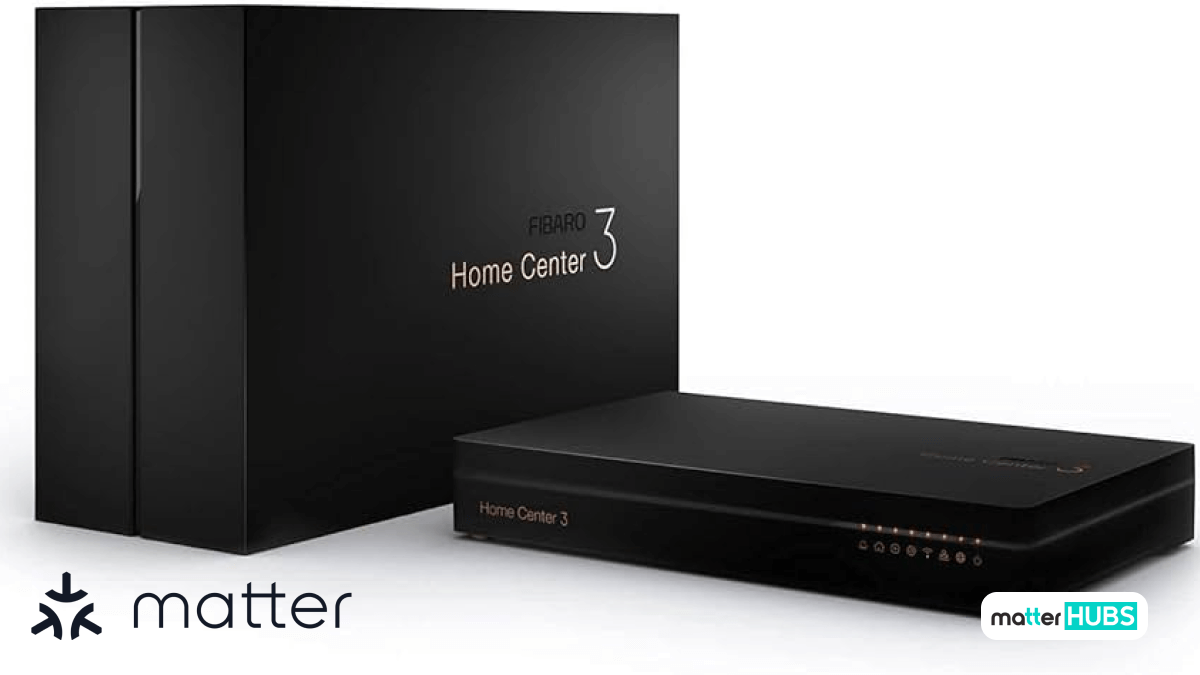
The Fibaro Home Center 3 is a high-end smart home hub designed for users who want the most comprehensive home automation experience. It supports multiple protocols, including Z-Wave, Zigbee (with additional modules), Wi-Fi, and Matter, making it one of the most versatile hubs on the market. This hub is ideal for advanced users looking to create complex automation rules and fully integrate their smart home devices.
Key Features
-
Multi-Protocol Support: Works with Z-Wave, Zigbee (via modules), Wi-Fi, and Matter, covering a wide range of devices.
-
Advanced Automation Capabilities: Offers robust automation options with highly customizable rules and triggers.
-
Home Assistant Compatibility: Fully integrates with Home Assistant, providing expansive control over home automation setups.
Pros and Cons
Advantages
- Comprehensive Matter Hub: Excellent choice for users who want a fully integrated smart home hub with support for multiple protocols.
- Highly Customizable: Offers extensive automation features that can be tailored to fit any home setup.
- Broad Compatibility: Works with a variety of smart home platforms, making it a unified control center for all smart devices.
Disadvantages
- Higher Price Point: More expensive than other hubs, reflecting its advanced capabilities and features.
- Complex Setup Process: Best suited for tech-savvy users, as the setup and configuration can be challenging for beginners.
Conclusion
With the Matter protocol and the manufacturing of Matter bridges the smart home experience is definitely easier for smart homeowners. With these Matter bridges you can create the ultimate smart home automation experience. For a great home automation, I would conclude that investing in a Matter bridge would allow you to not only save money as most Matter devices are expensive but also gives you full control over all smart devices under one platform.
FAQs
The purpose of a Matter bridge is to bring non-Matter devices into the Matter ecosystem. It basically acts as an intermediary between Matter and non-Matter devices. For example, if you have an older smart device or a device without Matter compatibility, a Matter Bridge could connect it to your Matter network. So, the small devices which are the Matter bridge allow compatibility by translating between the two protocols.
If you are not willing to invest in any Matter devices right now, you could bring the non-compatible devices to the Matter protocol by a Matter bridge and enjoy the same luxuries as a Matter device! For example, you can connect your Zigbee, Bluetooth and Zwave devices to the Matter network.
A Matter Bridge works by performing protocol communication or translation between the non-Matter protocols and Matter so that the non-Matter devices appear as a bridged device to the Matter fabric.
Matter does not need a hub or core bridge. Rather, it enables direct device-to-device communication over Thread or Wi-Fi, which is subsequently controlled by a Matter Controller.

